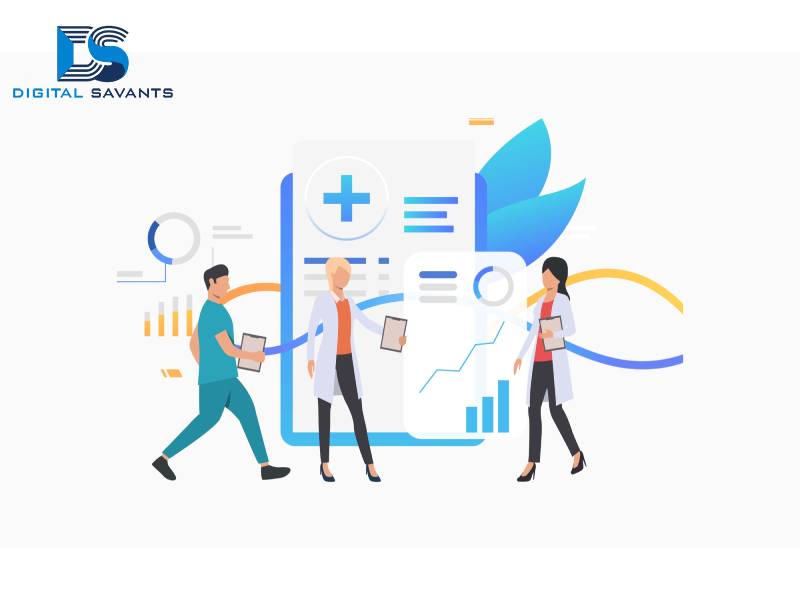
Innovations in Healthcare and Pharma Sectors
Even before the COVID-19 pandemic, technology had been changing the delivery of healthcare around the world. Today, automation and AI are having a profound impact on healthcare processes at all stages of the patient process: scheduling, clinical assessment, diagnosis, prescriptions, follow-up care, and billing.
Doctors, hospitals, and researchers use automation to lower costs and improve the quality of care, as well as to aid in analyzing patient and operations data. Automation, AI, and machine learning are all well-suited to handling vast quantities of data and managing repetitive tasks.
As with any powerful tool, however, automation in healthcare is highly complex. Healthcare administrators and executives must be educated in how automation interfaces with the industry to make the best use of technology and understand the challenges that it entails.
If they are to be successful in the 21st century, healthcare leaders must be prepared to take advantage of automation trends.
How Healthcare automation in administration benefits the industry
Healthcare leaders already know that automation works. According to healthcare industry research organization CAQH, the industry has reduced administrative costs by $122 billion as a result of automation and could save an additional $16 billion by fully automating some common tasks. Implementing automation in healthcare will likely be the first responsibility of new healthcare administrators as they are tasked with lowering costs, improving care quality, and using data analysis to support decision-making.
-
Patient billing and scheduling
Robotic process automation (RPA) can handle administrative tasks around the clock, allowing staff to focus on pressing tasks that require decision-making and leadership skills. Claims, billing, and scheduling tasks that can be automated can streamline processes, improve billing and revenue, and enhance patient management. In addition, automation can manage patient intake and scheduling, all of which leaves staff free to make sure patients get the care they need.
-
Staff support
The COVID-19 pandemic put a strain on healthcare facilities around the globe. Providers soon saw the need to protect their staff. They established hotlines — automated triage screening tools that let patients self-triage and took the work off of nurses and staff. Some hospitals used trained AI tools to identify pneumonia in COVID-19 patients. These and other uses of automation in healthcare were designed to support staff and help prevent burnout.
-
EHRs
When former President Barack Obama signed the Affordable Care Act into law in 2010, it mandated the adoption of electronic health records (EHRs). More than 10 years later, EHRs have provided healthcare leaders with a treasure trove of actionable data that is improving care. Automated processes excel at managing the massive amount of data in EHRs. Collecting the data is just part of automation in healthcare, however. Healthcare professionals can use patient records to train AI applications, understand patient population data, conduct patient research, and improve care. IT specialists must clean the data before it can be analyzed and made useful.
-
Patient communications
Chatbots answer patient questions and schedule appointments. Using natural language processing (NLP) capabilities, AI can conduct surveys and analyze responses. Automation in healthcare helps providers meet patients where they are and make it easier to access care.
-
Data security and blockchain
Blockchain uses encryption and other security measures to store data and link it in a way that enhances security and usability. Together with automation in healthcare, blockchain is a powerful technology that has changed how healthcare leaders use medical and patient data to gain insights and improve care and delivery.
-
Dashboard analytics
One of the main responsibilities of health administrators is measuring and improving operational efficiencies. Healthcare dashboards are one of the most powerful tools for healthcare providers to visualize data to understand their key performance indicators (KPIs) and help guide decision-making. A healthcare dashboard can allow insurers to understand claims data, providers to better see clinical data, and hospitals to track resource allocation.
-
Reduced potential for medical errors
According to a study published by the National Center for Biotechnology Information, “about 400,000 hospital patients experience some type of preventable harm each year,” with the cost of medical errors ranging between $4 billion and $20 billion annually. Health technology startups have created AI applications to help prevent deaths by error; for instance, technology can analyze EHR data to flag unusual prescriptions.
-
Augmented reality
Augmented reality (AR) uses 3D modeling and visualization to support doctors in diagnoses, surgery, and other procedures. AR applications run on tablets and phones, making them accessible to all healthcare professionals.
-
Enhanced clinical decision support and diagnosis
One of the biggest benefits of automation in healthcare is that it can enhance clinical decisions and support evidence-based practice, which combines the use of research with clinical practice to identify best practices in diagnosis and treatment. AI that has been trained on massive datasets can speed up research and diagnoses. Doctors use AI to support their treatment decisions, augmenting rather than replacing their expertise.
-
IoT
Smartwatches, wearable medical devices, and smart thermometers are just some of the ways that providers are delivering healthcare outside of a clinic or hospital. These devices collect data on pulse and blood pressure, heart activity, and temperature to identify illness and disease clusters. Using automation to gather this data for analysis is the promise of the internet of things (IoT). As with EHRs, healthcare leaders must be aware of the data security concerns surrounding IoT.

